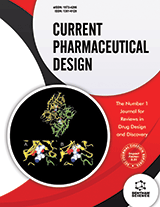Abstract
Cardiovascular disease (CVD) is a leading cause of morbidity and mortality worldwide. There is growing evidence that molecular chaperones, many of which are heat shock proteins HSPs, are involved in CVD pathogenesis. In this review we focus on HSP60, the human mitochondrial chaperone that also displays extramitochondrial and extracellular functions. HSP60 is typically cytoprotective but a number of stress conditions determine its conversion to a potentially toxic molecule for cells and tissues. We present illustrative examples of specific subtypes of CVD where HSP60 is implicated in the initiation and/or progression of disease. The data not only indicate a pathogenic role for HSP60 but also its potential as a biomarker with applications for diagnosis, assessing prognosis and response to treatment, as well as for preventing and treating CVD.
Keywords: Chaperonin, heat shock protein 60, cardiomyocytes, heart failure, cardiovascular disease, atherosclerosis, apoptosis, microRNAs (miRs), diabetes, Atrial fibrillation
Current Pharmaceutical Design
Title: Heat Shock Protein-60 and Risk for Cardiovascular Disease
Volume: 17 Issue: 33
Author(s): Manfredi Rizzo, Alberto J.L. Macario, Everly Conway de Macario, Ioanna Gouni-Berthold, Heiner K. Berthold, Giovam Battista Rini, Giovanni Zummo and Francesco Cappello
Affiliation:
Keywords: Chaperonin, heat shock protein 60, cardiomyocytes, heart failure, cardiovascular disease, atherosclerosis, apoptosis, microRNAs (miRs), diabetes, Atrial fibrillation
Abstract: Cardiovascular disease (CVD) is a leading cause of morbidity and mortality worldwide. There is growing evidence that molecular chaperones, many of which are heat shock proteins HSPs, are involved in CVD pathogenesis. In this review we focus on HSP60, the human mitochondrial chaperone that also displays extramitochondrial and extracellular functions. HSP60 is typically cytoprotective but a number of stress conditions determine its conversion to a potentially toxic molecule for cells and tissues. We present illustrative examples of specific subtypes of CVD where HSP60 is implicated in the initiation and/or progression of disease. The data not only indicate a pathogenic role for HSP60 but also its potential as a biomarker with applications for diagnosis, assessing prognosis and response to treatment, as well as for preventing and treating CVD.
Export Options
About this article
Cite this article as:
Rizzo Manfredi, J.L. Macario Alberto, Conway de Macario Everly, Gouni-Berthold Ioanna, K. Berthold Heiner, Battista Rini Giovam, Zummo Giovanni and Cappello Francesco, Heat Shock Protein-60 and Risk for Cardiovascular Disease, Current Pharmaceutical Design 2011; 17 (33) . https://dx.doi.org/10.2174/138161211798220981
| DOI https://dx.doi.org/10.2174/138161211798220981 |
Print ISSN 1381-6128 |
| Publisher Name Bentham Science Publisher |
Online ISSN 1873-4286 |
 27
27
- Author Guidelines
- Graphical Abstracts
- Fabricating and Stating False Information
- Research Misconduct
- Post Publication Discussions and Corrections
- Publishing Ethics and Rectitude
- Increase Visibility of Your Article
- Archiving Policies
- Peer Review Workflow
- Order Your Article Before Print
- Promote Your Article
- Manuscript Transfer Facility
- Editorial Policies
- Allegations from Whistleblowers
- Announcements
Related Articles
-
Potential Roles of MyomiRs in Cardiac Development and Related Diseases
Current Cardiology Reviews Vitamin D Insufficiency and Diabetes Risks
Current Drug Targets Foreword
Current Nutrition & Food Science The Stroke-Induced Blood-Brain Barrier Disruption: Current Progress of Inspection Technique, Mechanism, and Therapeutic Target
Current Neuropharmacology Large Artery Stiffness and Antihypertensive Agents
Current Pharmaceutical Design Therapeutic Angiogenesis in Ischemic Tissues by Growth Factors and Bone Marrow Mononuclear Cells Administration: Biological Foundation and Clinical Prospects
Current Stem Cell Research & Therapy Effect of Androgenic and Antiandrogenic Acting Compounds in Macrophage Accumulation and Cell Replication in the Aorta of Oophorectomized Hypercholesterolemic Rabbits
Vascular Disease Prevention (Discontinued) Nutraceuticals - An Emerging Era in the Treatment and Prevention of Cardiovascular Diseases
Current Pharmaceutical Biotechnology Can Statin be a Novel Pharmacophore for Antidiabetic Activity?
Mini-Reviews in Medicinal Chemistry Disruption of Circadian Rhythms in Critical Illness - A Role of Hyperoxia-Induced Lung Injury
Current Pharmaceutical Design Menopause Does Not Affect Fatty Liver Severity In Women: A Population Study in a Mediterranean Area
Endocrine, Metabolic & Immune Disorders - Drug Targets Oat β-Glucan Reduces Serum LDL Cholesterol in Humans with Serum LDL Cholesterol <160mg/dL
Immunology, Endocrine & Metabolic Agents in Medicinal Chemistry (Discontinued) The Opioid Receptor Independent Actions of Kappa Receptor Agonists in the Cardiovascular System
Current Pharmaceutical Design Editorial [Bioengineering and Clinical Perspectives in Diagnostic and Therapeutic Applications of Microbubbles (Executive Guest Editor: Theodore G. Papaioannou)]
Current Pharmaceutical Design Arterial Wall Structure and Dynamics in Type 2 Diabetes Mellitus Methodological Aspects and Pathophysiological Findings
Current Diabetes Reviews An Extract from Prickly Pear Peel (Opuntia ficus-indica) Affects Cholesterol Excretion and Hepatic Cholesterol Levels in Hamsters Fed Hyperlipidemic Diets
Current Bioactive Compounds Editorial (Thematic Issue: Biomarkers of Impaired Innate and Adaptive Immunity in Health and Disease)
Current Immunology Reviews (Discontinued) Treatment Considerations of Clinical Physician on Hypertension Management in Asia
Current Hypertension Reviews Advances in Clinical Study of Curcumin
Current Pharmaceutical Design Endocytosis, Intracellular Traffic and Fate of Cell Penetrating Peptide Based Conjugates and Nanoparticles
Current Pharmaceutical Design


























